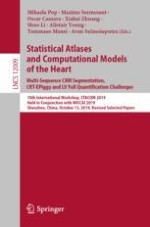2020 | OriginalPaper | Buchkapitel
Automated Multi-sequence Cardiac MRI Segmentation Using Supervised Domain Adaptation
verfasst von : Sulaiman Vesal, Nishant Ravikumar, Andreas Maier
Aktivieren Sie unsere intelligente Suche, um passende Fachinhalte oder Patente zu finden.
Wählen Sie Textabschnitte aus um mit Künstlicher Intelligenz passenden Patente zu finden. powered by
Markieren Sie Textabschnitte, um KI-gestützt weitere passende Inhalte zu finden. powered by
